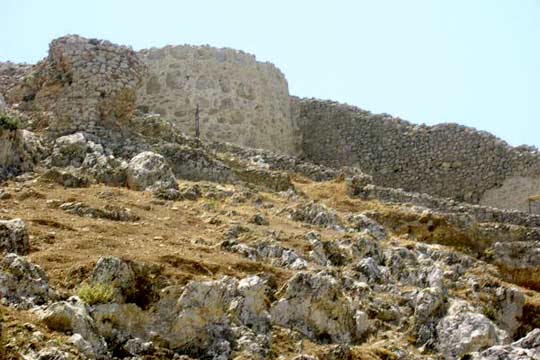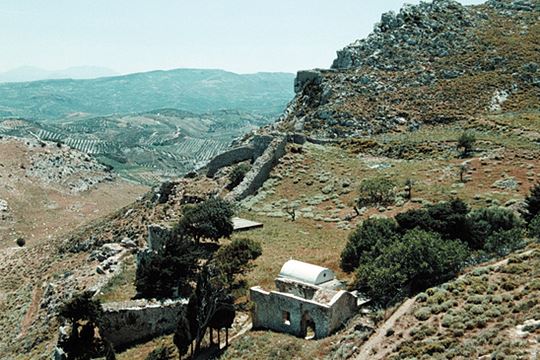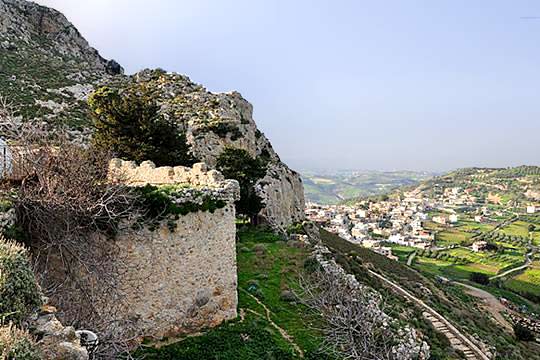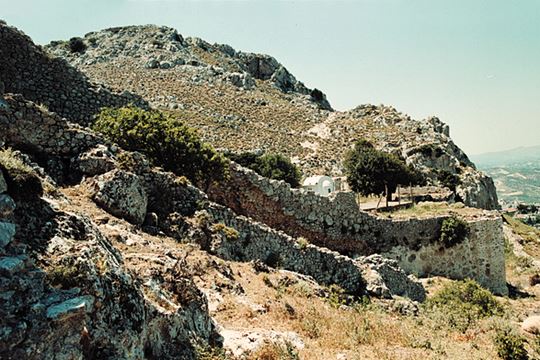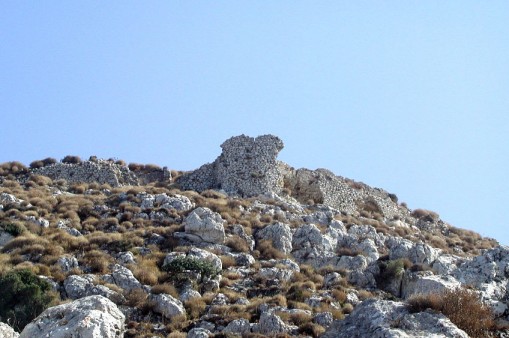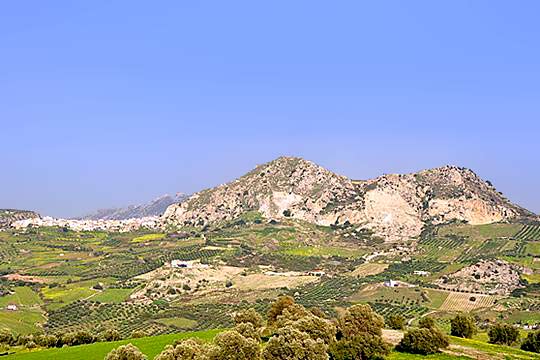Profitis Elias, Heraklion, Herakleion,Crete
Fortress of Temenos
| Location: |
| Profitis Elias, Heraclion, Crete |
| Region > Prefecture: | 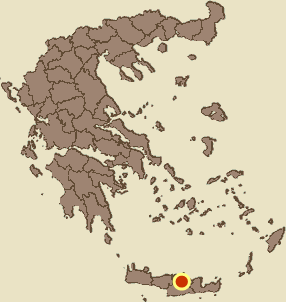 |
| Crete Herakleion | |
| Municipality > Town: | |
| City of Heraklion • Profitis Elias | |
| Altitude: | |
|
Elevation ≈ 450 m (Relative Height≈150 m) |
| Time of Construction | Origin | |
| 961 | BYZANTINE |
|
| Castle Type | Condition | |
| Byzantine City |
Not Good
|
The Fortress of Temenos or of Nikephoros Focas it is the most important Byzantine monument in Crete. It is located on a hill 16km south of Heraclion, close to the village of Profitis Elias.
Location & Strategic Scope
The castle is on the twin-peaks hill called Rocca south of Profitis Elias. On the hill thera are also traces of the acropolis of the ancient town Lykastos which is mentioned by Homer in Iliad.
The hill was ideal for the construction of an impregnable castle, as it dominates throughout the surrounding area. Also, there was a natural fresh water source on Rocca, which fed the fountain Fountana, located inside the fort.
History
When the Byzantine general Nikephoros Phocas (later an emperor) liberated Crete from the Arabs in 961AD, he founded a fort on Rocca, in order to transfer the city of Candia there. The fort was built, but Candia (current Heraklion) was not moved, as its port was very important for the Cretans. Thus, the fortress was left alone overlooking the region and was named Temenos. Even today, the whole province is called Temenos Province.
In 1204, when the Genoan pirate count of Malta and pirate Enrico Pescatore conquered Crete, he either founded or repaired 15 fortresses to ensure his grasp of the island. One of these was the fort of Temenos.
Later, when the Venetians occupied Crete in 1209, they fortified Temenos with stronger walls and repaired it according to the technology of that period. The fort, which was characterized as oppidum fortissimum (powerful fortress) was named Castello Temene and was granted as a fief to the families of Coressi, Kornaros (Corner) and Querini. Since then, a bourg (settlement) started developing around the fort, inhabited by villeins, i.e. slavers of the feudal properties. This settlement evolved into the current village of Prophet Elias.
During the Cretan War, i.e. the war between Venetian-Cretans and Turks, most battles took place in the countryside, as the Great Castle of Candia resisted for 22 years. In the wider area of Heraklion, Christians were led by the abbot of the monastery Agarathos, Athanasios Christoforos and the scholar Gerasimos Vlachos, while the Venetian general Gildasis (Gil d 'Has) was launching guerrilla attacks against the Ottomans. During one of these attacks, in 1647, Gil d’ Has attacked the Turks in the fortress Temenos, slaughtering almost all of them.
In 1669, after the Turks conquered Candia, the fort was donated by the Sultan to the Venetian traitor of Candia, Andrea Barozzi. The fort was then renamed Kanli Castelli, i.e. bloody fort, so as to commemorate the massacre of the Turkish army in 1647.
The fortr was abandoned rather early, around the end of the 17th or beginning of 18th century.
Structure, Fortification & Buildings
Temenos was a large fortress covering an area of 600,000 sq.meters. Its architecture was very particular resembling the Rentina castle in Macedonia and minor forts in the Armenian Cilicia in Asia Minor.
On the east side of Rocca, the visitor can still see the remains of the walls, two water tanks and the church of St. George. Between the two peaks there is a part of the fortifications surviving and the church of Agia Paraskevi. On the west, there is a double tank, the fountain Fountana and the churches of the Virgin Mary and St. Anthony.
| First entry in Kastrologos: | November 2012 |
Sources
- Website CretanBeaches - Temenos Fortress
- Website Περιήγηση στην Κρήτη - Fortress of Temenos (N.Gigourtakis)
- Giannis Christakis, “Historical Fortification Monuments of Crete (330BC-1898)”, Publication Kritika Grammata, 2004
- ΑΡΧΑΙΟΛΟΓΙΚΟΝ ΔΕΛΤΙΟΝ, τεύχος 54/B2, 1999, σελ. 89-897
|
|
| Access |
|---|
| Approach to the monument: |
| From the SE side of the village Profitis Ilias (16km south of Heraklion) take the dirt road which after 450m ends at the beginning of a stone staircase leading to the central yard of the castle. |
| Entrance: |
| Free access |



